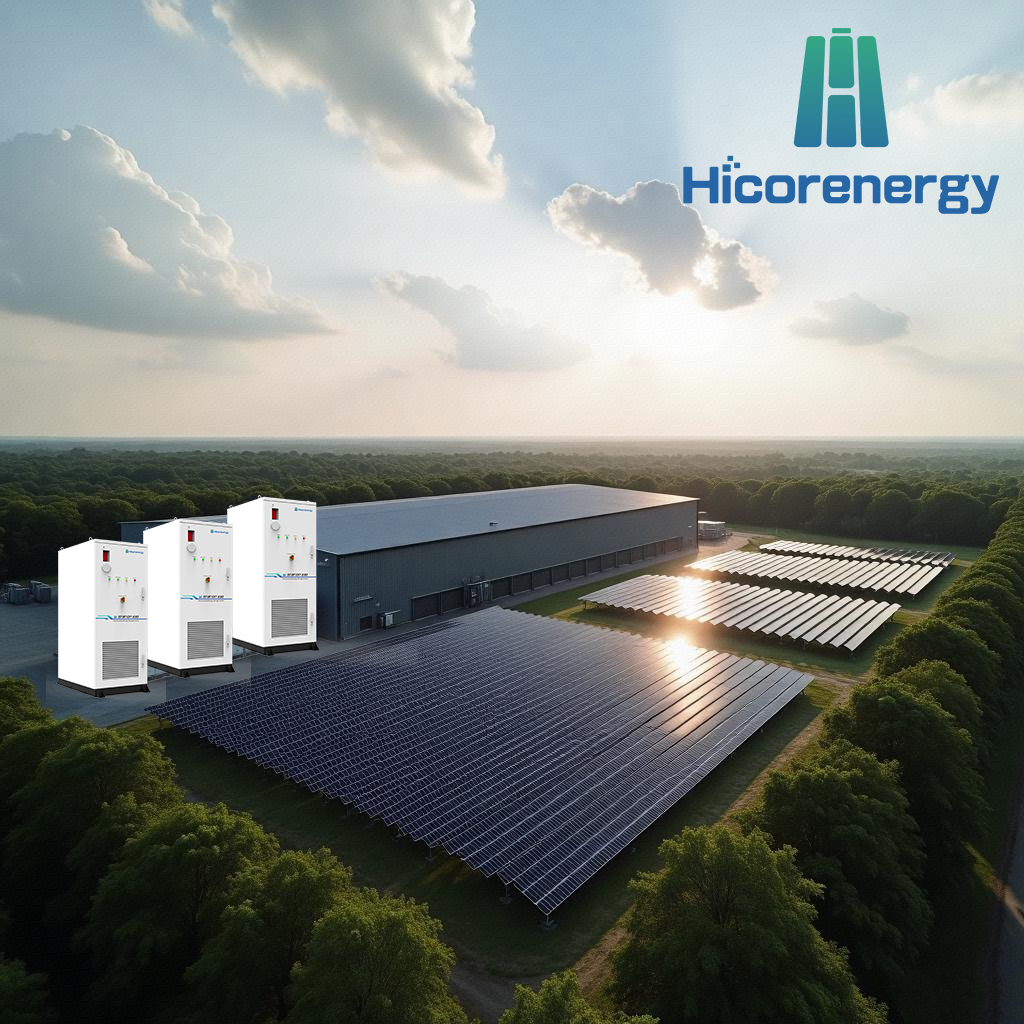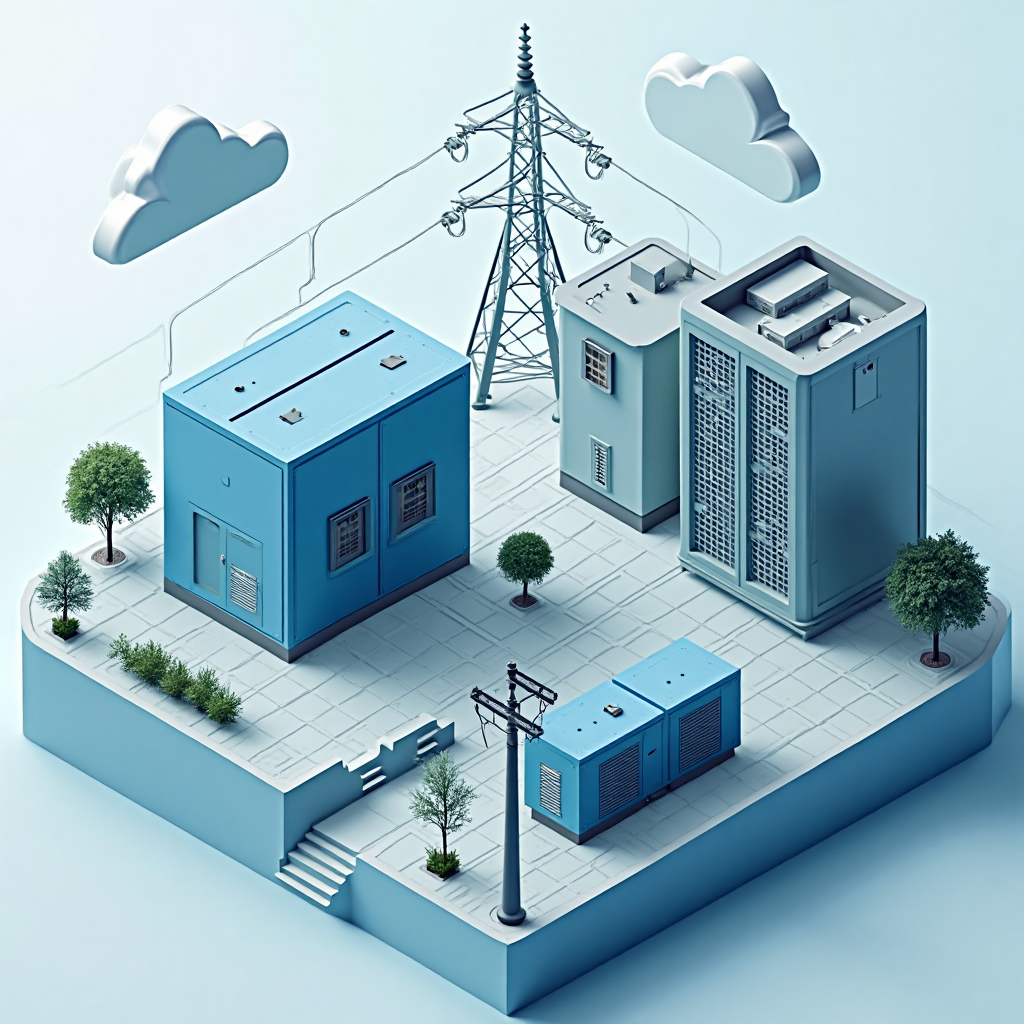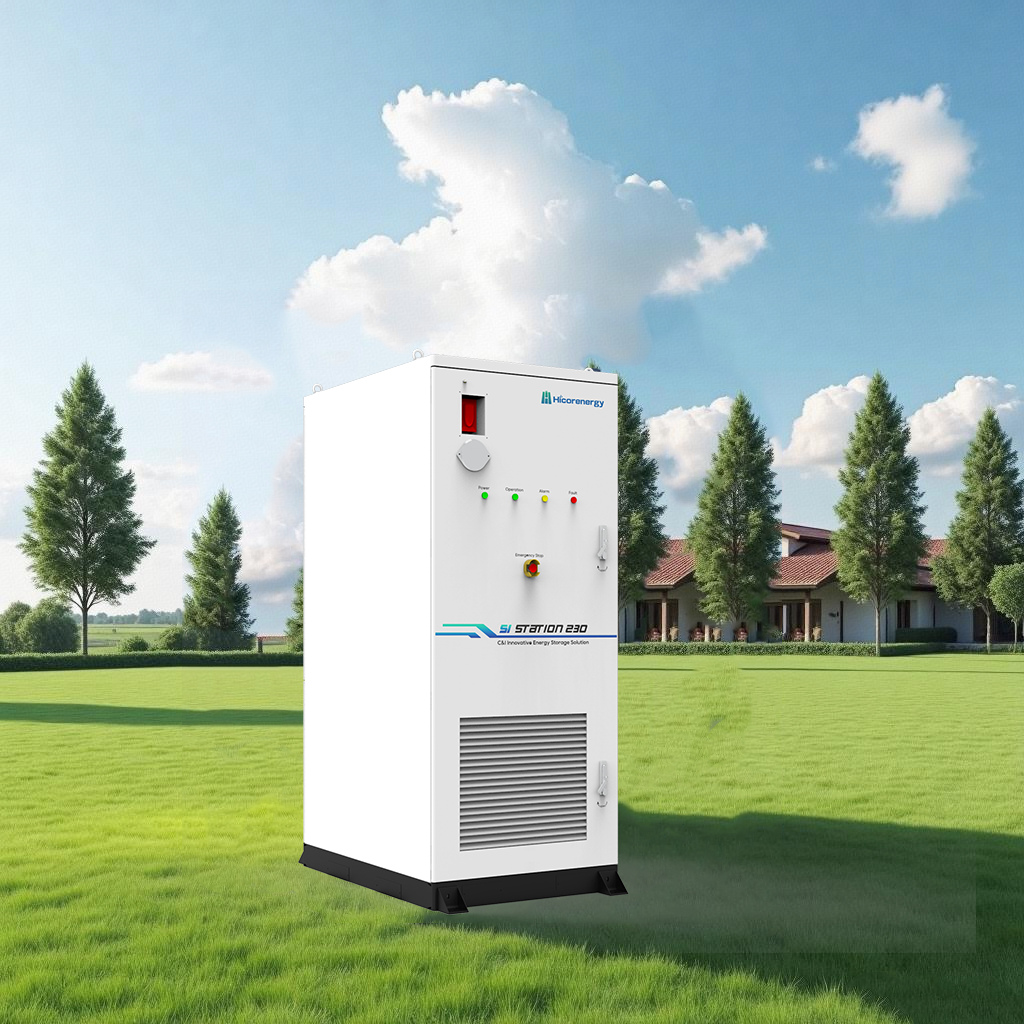Table of Contents
What is a Liquid Cooling Battery Cabinet and How Does It Work?
A liquid cooling battery cabinet is a thermal management system that uses liquid coolant to regulate battery temperature, improving performance and lifespan. It circulates fluid through channels or plates, removing heat from battery cells efficiently, especially in high-load or high-temperature conditions.

Benefits of Liquid Cooling for Battery Systems
Liquid cooling provides enhanced thermal stability, which is crucial for high-capacity or high-density battery systems. By maintaining optimal temperatures, it minimizes thermal stress, reduces the risk of overheating, and ensures uniform temperature distribution across battery cells.
Hicorenergy’s liquid cooling solutions, such as the Si Station 230, integrate battery modules in a highly compact, modular form. These cabinets support grid-tied and off-grid applications, offer IP54-rated protection, and are built for diverse environmental conditions. Compared to air cooling, they allow for higher charge/discharge rates without compromising safety or performance. Additionally, liquid cooling improves energy efficiency by reducing internal resistance losses due to heat buildup, resulting in lower operational costs and a longer battery lifecycle.
Furthermore, this technology enables batteries to perform at peak capacity even in harsh environmental conditions. Whether it’s in hot desert climates or compact installations with limited airflow, liquid cooling ensures thermal balance, which in turn increases operational consistency, equipment longevity, and return on investment. For energy-intensive applications, where thermal fluctuations can jeopardize system stability, liquid cooling is not just an enhancement—it’s a necessity.
How Liquid Cooling Enhances Battery Performance and Longevity
Liquid cooling enables batteries to consistently operate within their optimal temperature range. This stability enhances performance metrics such as charge/discharge efficiency and power output, while also significantly extending cycle life. For systems requiring continuous or intensive use, liquid cooling is an indispensable technology.
Maintaining consistent internal temperatures prevents the formation of hotspots that can lead to cell imbalance or early degradation. Balanced thermal conditions ensure uniform cell aging, which simplifies battery management and enhances overall reliability. In energy storage applications that demand high throughput and minimal downtime, liquid cooling ensures that systems deliver optimal performance throughout their service life.
Top Applications for Liquid Cooling Battery Cabinets
Utility and Grid Energy Storage
Grid operators need storage systems that can handle large volumes of energy, respond quickly to fluctuations, and operate reliably over long durations. Liquid cooling battery cabinets support high energy throughput and continuous operation. Their precise thermal control prevents overheating during demand surges, thus maintaining grid stability.
These cabinets are particularly valuable in peak shaving, frequency regulation, and load shifting, where rapid power injection and withdrawal are required. Liquid cooling ensures that such rapid thermal cycles do not impair battery health, thus enabling utilities to maximize operational uptime and return on investment.
Renewable Energy Storage
In solar and wind systems, power generation is intermittent and often unpredictable. Liquid cooling battery cabinets can handle rapid and frequent charge/discharge cycles that are typical in renewable setups. These systems ensure that energy captured during peak generation is efficiently stored and ready for use when generation dips.
As global emphasis on carbon neutrality and net-zero goals intensifies, reliable storage systems become the backbone of green energy infrastructure. Liquid cooling ensures that such infrastructure remains stable, safe, and efficient, even in off-grid or hybrid deployments.
Data Centers and Critical Infrastructure
Facilities requiring uninterrupted power supply, such as data centers and hospitals, benefit immensely from liquid cooling. These systems offer a reliable backup energy source that remains stable under constant load. The compact, high-density design of cabinets like Hicorenergy’s Si Station 230 also conserves valuable floor space.
Liquid cooling prevents thermal spikes caused by sudden load increases, helping data centers maintain 24/7 uptime and high availability. In facilities with tight thermal tolerances, even a small temperature deviation can result in hardware damage or data loss. With liquid cooling, such risks are mitigated.
Electric Vehicle Charging Stations
As fast-charging EV infrastructure expands, energy storage systems must support rapid discharge without overheating. Liquid cooling allows battery cabinets to deliver high current safely and repeatedly. This minimizes degradation, ensuring long-term reliability for high-demand applications.
These cabinets support grid independence, enabling EV stations to store energy during off-peak times and discharge during peak hours. This use of stored energy reduces demand charges, enhances sustainability, and makes EV charging more cost-effective.
Industrial Operations and Remote Installations
Factories, mining sites, and off-grid locations require rugged, high-capacity energy storage. Liquid cooling cabinets operate efficiently in harsh environments and under continuous loads. Their low-maintenance design and modular scalability support growth and evolving power needs.
For remote installations with limited human oversight, reliability is key. Liquid cooling, combined with smart diagnostics and remote monitoring, allows system operators to maintain peak functionality without constant on-site supervision.

Choosing the Right Liquid Cooling System for Your Battery Cabinet
Selecting the right solution depends on several factors:
Energy Capacity Needs: For large-scale or industrial setups, choose systems like the Si Station 230 with high kWh capacity.
Installation Environment: IP-rated enclosures are essential for outdoor or dusty environments. The Si Station 230’s IP54 rating offers strong protection.
Integration and Compatibility: Look for systems that work with existing electrical infrastructure, like Hicorenergy’s support for 208/400/480Vac 3P4W connections.
Modularity and Scalability: Choose cabinets that can grow with demand through parallel configurations.
Monitoring and Control: Opt for smart systems with remote monitoring and temperature control for operational efficiency.
Also important is compliance with international safety and grid standards. Hicorenergy’s systems are tested for global certifications, making cross-border deployment easier. Availability of local service and technical support can reduce maintenance costs and ensure long-term system health.
For buyers concerned with long-term operational savings, choosing a system with built-in smart diagnostics and firmware upgrade capabilities adds value. The ability to adapt through software rather than hardware changes extends the product lifecycle.
Cost-Effectiveness of Liquid Cooling Battery Solutions
While liquid cooling systems involve a higher initial investment compared to air-cooled solutions, their total cost of ownership is lower. The primary contributors to cost savings include:
Improved Energy Efficiency: Liquid cooling minimizes thermal losses, increasing round-trip efficiency.
Extended Battery Life: Consistent temperatures reduce degradation, extending usable battery life.
Reduced Downtime and Maintenance: Smart monitoring detects issues early, reducing failures and maintenance costs.
Scalable Design: Modular systems reduce the need for costly replacements during expansion.
When comparing lifecycle costs, liquid cooling consistently proves more economical for medium to large-scale systems. It reduces the frequency of battery replacement, increases uptime, and decreases the need for expensive emergency repairs. Hicorenergy’s Si Station 230 is designed for minimal operational intervention, further cutting down service costs.
Moreover, these systems enhance revenue opportunities. By enabling participation in energy arbitrage, grid services, and ancillary markets, liquid-cooled storage can generate active income in addition to reducing energy expenses. They are also eligible for various energy efficiency grants and green financing initiatives.
Comparing Liquid Cooling with Other Cooling Methods for Batteries
Air Cooling
This is the most common method due to its simplicity and low cost. However, air cooling is less effective in maintaining uniform temperature across cells, especially in densely packed or high-power systems. It’s suitable for small-scale applications but not ideal for industrial or utility use.
Air systems are also more vulnerable to environmental variables like dust and ambient temperature. In hot climates, their efficiency drops significantly, requiring additional air conditioning that adds to energy costs.
Phase Change Materials (PCMs)
PCMs absorb and release heat during transitions between solid and liquid phases. They provide passive thermal management but lack active control and are less effective in high-load scenarios.
Their primary limitation is their one-time-use capacity during a thermal cycle. They need sufficient time to reset, which isn’t ideal for systems requiring continuous thermal management. Additionally, they may increase system complexity and maintenance.
Immersion Cooling
This method involves submerging batteries in a dielectric fluid. While highly effective, it is costly and complex to maintain. It’s used in very high-performance environments, like military or aerospace applications.
Its design limitations and cost barriers prevent its widespread use in commercial and industrial energy storage. Handling, leak containment, and system redundancy requirements make it impractical for most mainstream use cases.
Liquid Cooling
Combining the control of active systems with high thermal conductivity, liquid cooling offers the best solution for demanding applications. It maintains optimal temperature, enhances safety, and extends battery life. Compared to the other methods, it strikes a balance between performance and practicality.
Hicorenergy’s liquid cooling battery cabinets represent this ideal, with advanced safety features, modular design, and real-world deployment success across industries.

The Future of Liquid Cooling in Energy Storage Systems
The energy storage landscape is evolving rapidly, and liquid cooling technology is positioned to become the backbone of high-capacity, high-performance systems. Key trends include:
AI-Driven Thermal Management: Future systems will use machine learning to predict and adapt to temperature changes, optimizing coolant flow and improving efficiency.
Integration with Smart Grids: As grids become more dynamic, storage systems with precise thermal control will be essential for demand response and grid balancing.
Sustainable Coolants: New, eco-friendly fluids will reduce environmental impact while maintaining high performance.
Portable Modular Designs: Rapid deployment solutions for disaster recovery and mobile infrastructure will benefit from compact liquid-cooled cabinets.
The global shift toward decentralized, renewable energy systems demands storage solutions that are not only powerful but also smart and adaptive. Liquid cooling will play a pivotal role in this evolution by enabling systems to scale in both size and intelligence. Hicorenergy’s commitment to innovation ensures its systems are ready for these challenges.
Summary of Hicorenergy Products
Hicorenergy provides reliable, modular, and efficient liquid cooling battery cabinets like the Si Station 230, ideal for high-performance applications in energy, industry, and infrastructure. Their systems offer IP-rated protection, global certification, and seamless integration.
-scaled.png)
